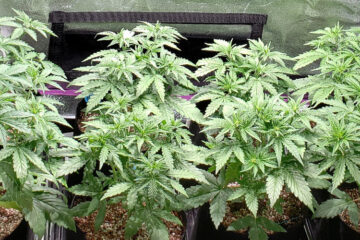People all over the world are exploring Kratom as an alternative to pharmaceutical opioids. It poses the possibility of an herbal medicine that can help to relieve withdrawal symptoms to make them drug free. But what is Kratom? Learn all about Kratom, its applications, history and effects in this blog entry.
Some people are describing Kratom as a potential end to the opioid epidemic that the modern world seems to be in the heart of. It looks like Kratom is the only other plant on the globe causing as much controversy as marijuana right now. Thailand has also allowed us to use this wonderful Herb now as well!
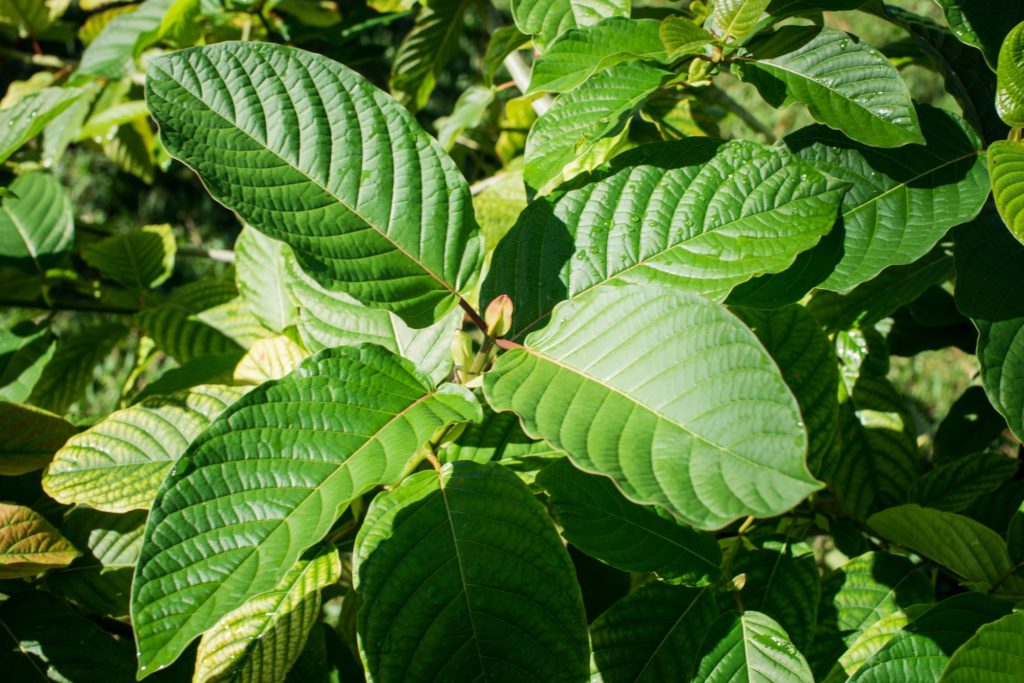
I am in the Process of Developing a few Kratom related Websites and Farms now. I will go in now and Register the Domain Name ThailandKratonFarms.com!
A lot of those who are reading this perhaps have not ever even heard of Kratom, let alone to know what all the fuss is about. But alas, something as natural as another plant that has the ability to throw the entire world slightly off its axis for a moment while everybody decides whether it is right or wrong to use is Kratom.
The plant itself comes from South East Asia, where people have been using it in practice for longer than we have even known about it. Overall it is used for a variety of different medical reasons, but the most pertinent being the cessation of opioid use.
We always have to approach these “plants of controversy” with a centimeter of detachment. At the center of a search for truth is emancipation from both sides, even if it is just for a moment, to see what is actually going on. Unfortunately, neither activists nor politicians have the necessary detachment to do this. They are obviously batting for one side with a very specific agenda.
But we are not. We just want to know what is really going on. We assume that you, too, just want to know what Kratom is all about. So here is what we know about this controversial plant, its benefits and its side effects and its current legal standpoint in the world.
Kratom is a plant that grows in the tropics of South East Asia. Its scientific name is Mitragnya Speciosa, and is very closely related to the coffee plant. It has street names such as Thang, Kakuam, Thom, Ketum, Biak-Biak and Krypton. For the most part, Kratom is prevalent all over Thailand, Malaysia, Indonesia and Papua New Guinea.
Just like Cannabis comes in different strains, so does Kratom, all varying slightly from each other in effect and use. Strains are generally location specific, as the environment in which they grow generally tends to produce the different strain. It comes both deciduous and evergreen trees.
It has been used for centuries in South East Asia as a mild stimulant and appetite suppressant, as well as an analgesic and sedative. This is because at low dosages, Kratom seems to give stimulating effects, while at high dosages (over 15g) it tends to be a sedative.
So, for lack of a better descriptive word, Kratom is simply an herb that comes from a psychoactive tree, and more in the category of being a sedative. We’re going to explore the reasons that someone might want to use Kratom and how it affects the human body.
Kratom and the body: how does it work?

There are a number of active components in Kratom that make it desirable to the human body. Most of these active components are alkaloids. The most important and notable alkaloids in Kratom are mitragine and 7-hydroxymitragynine. These compounds are responsible for the sedative and analgesic effects of this plant.
The chemical structure of these alkaloids is very similar to what one might expect from a psychedelic, which is probably why it is put in that category. However, the experience is less psychedelic than it is sedative.
Interestingly, Kratom is used in small doses as a mild stimulant, much like the effect of chewing coca leaves. But higher doses basically lead to stupor, or a very strong sedation.
The active alkaloids in Kratom are opioid agonist, meaning that they are very attracted to the opioid receptors in the brain. Higher stimulation of these receptors is what is responsible for the sedative effect – and probably why Kratom is used as an opium substitute in Thailand.
The use of Kratom as a means of dealing with opioid withdrawal is becoming more and more popular in the west (which we will discuss in detail a little later on in this article). However, there are more reasons than that to use Kratom, so let’s have a look at what some of the medicinal properties of Kratom are.
Does Kratom get you high?
As we talked about, Kratom has different effects at different dosages. It is also mildly psychedelic. So, the short answer is – yes, it does get you high. The effect is very different from the “High” that people know from THC containing Cannabis, however. Some people say that the effect is much more subtle in terms of a psychedelic high.
The higher the dosage, the more likely it is that the user will experience this “high”. However, at high dosages, Kratom can also induce sleepiness, making it hard to even stay awake through the high. Nonetheless, some sort of cerebral movement takes place during the Kratom experience, especially at high doses.
Medicinal properties of Kratom
As we just mentioned, the compounds in Kratom go straight to the opioid receptors in the brain once they are ingested. This is what causes an analgesic or pain-relieving effect from Kratom. Those experiencing chronic pain use Kratom as an alternative to pharmaceutical opioids, such as oxycodone or methadone.
In traditional medicine originating from Kratom’s natural habitat, the leaves were also used to treat diarrhoea and other gut problems. In more modern times, Kratom has been used as a treatment for hypertension (high blood pressure). It reduces the blood pressure in much the same way that other opioids act.
Because of the sedative effect, Kratom can also be used to treat any disorders relating to sleep. Those who suffer from insomnia or night terrors have used Kratom as a means of entering into a deep and restful sleep.
Kratom as a medicine for opioid addiction
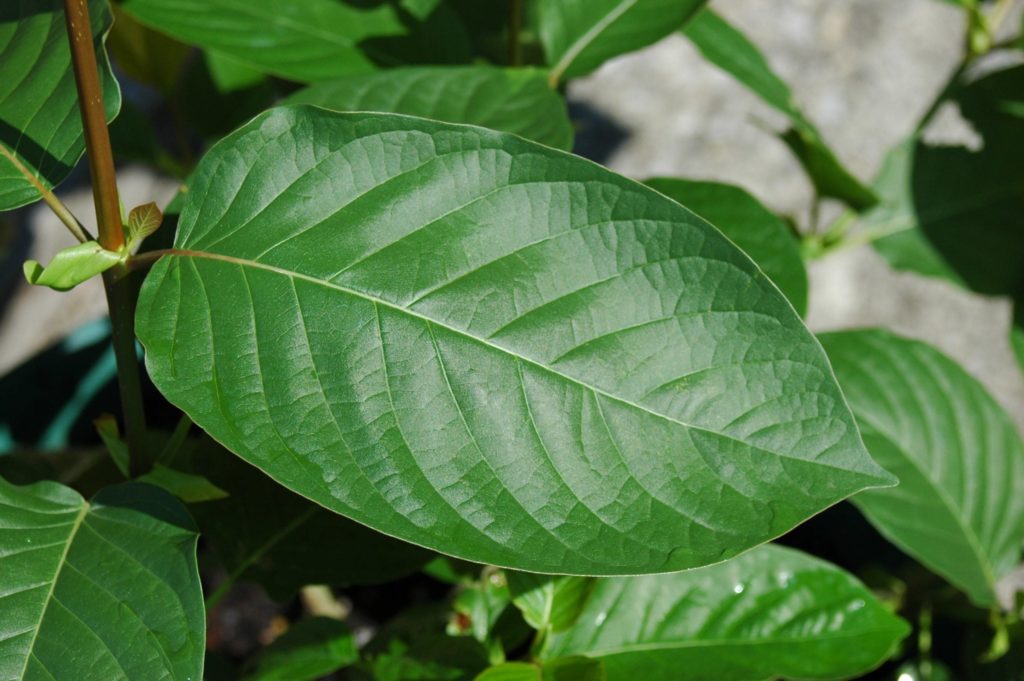
Kratom has gained popularity in the media for its potential as a replacement for opioid use and especially for its ability to help people deal with addictions.
A quick internet search will show that there is no shortage of people who are self-medicating with Kratom. Unfortunately, due to its nature as an herbal remedy, there’s a huge lack of data from clinical trials. That’s why it is increasingly difficult to give any concrete evidence to the potential of Kratom as a medicine for opioid addiction.
However, what we do know is kind of convincing. We already know that the effect of Kratom is opiate-like in itself. Plus, the active compounds excite the same parts of the brain that opioids do. There is very obvious evidence to suggest why Kratom might be so good at dealing with opioid addiction.
At the very least, Kratom is a great substitute for opioids, which are causing a worldwide addiction epidemic at the moment. While the opioid epidemic is relatively recent, Kratom has been used as an opiate substitute for hundreds of years in South East Asia.
With all of this being said, using Kratom doesn’t come without its own withdrawal symptoms, although they are shorter lived and less intense.
The physiological side effects of using Kratom are much less dramatic than oxycodone which is extremely addictive or other pharmaceutical opioids. But there is still the risk of a mild addiction.
A study conducted in 1988 in New Zealand by Jansen and Prast outlines the matter of Kratom for opioid addiction. Their study was published in the Journal of Ethnopharmacology, which explains the benefits of Kratom for addiction.
Their findings were that Kratom helped people overcome withdrawal from methadone (and other opioid) addiction. They also found that those suffering withdrawal from other drugs found some relief in Kratom therapy.
Their study rests on a study in Indonisia in 1897 by H. Ridley. Not surprisingly, he also reported that the leaves of Kratom could be used as a potential cure for opioid addiction.
Different kinds of Kratom
Different growing regions and breeding programs produce different kinds of Kratom. The different strains also partially account for the different effects experienced, namely sedative or stimulating. These are the most common types of Kratom on the market:
1. Thai Kratom

Thai Kratom, as the name might suggest, comes from Thailand. There are three kinds of Thai Kratom; red, white and green. However, the three colors do not pertain to the color of the leaves, but rather the color of the veins that run through them.
Red Kratom is well known for its analgesic effects, while the white and green kinds are more revered for their stimulating properties.
2. Maeng Da Kratom
Maeng Da is considered the most potent form of Kratom. It gives the strongest effect, both in pain relief and stimulation. It is the kind of Kratom someone would use to deal with pain without having to sacrifice energy levels.
3. Borneo Kratom
In contrast to the last two kinds of Kratom, the Borneo kind has heavy sedative effects. It has the characteristic of being a muscle relaxant and is used for its stress relieving factors. It also has one of the best profiles when it comes to side effects.
4. Bali Kratom
Of all the varieties, Bali Kratom grows the fastest. It also grows enormous leaves, so there is the potential for greater yield. However, the strength and potency of Bali Kratom is temperamental, so it makes dosage hard to judge. It is also more of a sedative than a stimulant.
5. Indo Kratom
The most common application of Indo Kratom is for pain relief. The plants belonging to this category of Kratom are also considered to have fewer side effects than most kinds of Balinese Kratom. However, the desired effect is also more subtle with Indo Kratom than with other varieties.
Preparations of Kratom
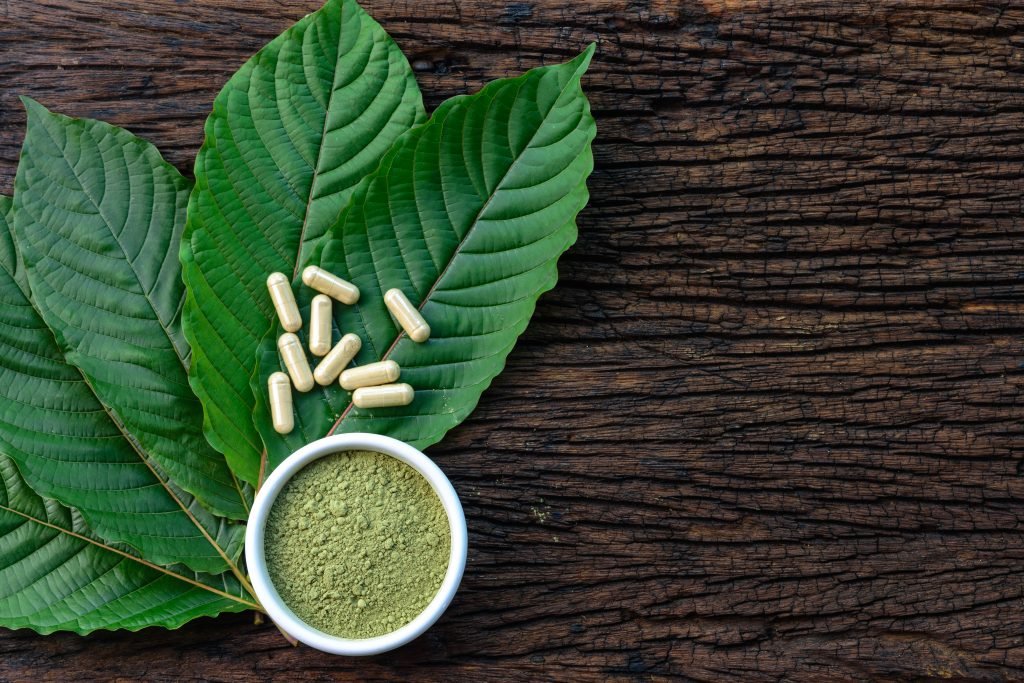
There are probably about as many different strains of Kratom as there are different strains of weed! But when it comes to the preparation, it’s always more or less the same.
When Kratom is purchased from herb shops, it usually comes in the form of the powdered leaf. It can be infused into a tea, sprinkled on food or into smoothies or can even just be eaten by the spoonful.
The taste is not that great, which is why some people choose to mix it in with food. However, the strongest effect is reached when the powdered leaf is just consumed and then washed down with a little bit of water.
Kratom can also be smoked. In the New Zealand study mentioned earlier, the subjects were to smoke the leaves of Kratom for six consecutive weeks. The opiate effects still take place even when the substance is smoked.
Historically, the leaves would simply be chewed in order to achieve the desired effect. However, in the western world it is unlikely to have access to fresh leaves or whole dried leaves unless the user grows their own Kratom.
Dosing Kratom is much like dosing marijuana: it takes some time to know and understand what the best dose is. However, there are some simple guidelines you can follow to get you started. Remember that at lower doses, Kratom is a stimulant, while at higher doses it can be a sedative.
- For stimulating effects, take 3-6 grams of the powdered leaf each day.
- For dealing with pain and anxiety, take 7-9 grams of the powdered leaf each day. This will give a slightly sedative effect. Anything more than this will probably induce sleepiness.
- For using Kratom for opiate withdrawal, start by taking 7-9 grams of the powdered leaf 2-4 times each day. After a few days, reduce the amount to 5-7 grams. After another day or two, reduce the amount to 3-5 grams. By one week, you should stop using Kratom all together.
Legality of Kratom in Europe and the world
The legality of Kratom varies enormously throughout the world, and it is a huge topic of concern at the moment. In most parts of Europe, the sale and trade of Kratom is pretty liberal. However, in the USA there is speculation that Kratom will be banned and categorized as a Class A substance – all of which makes Kratom a very controversial plant, just like Cannabis.
1. Europe
Interestingly, the Netherlands is the biggest supplier of Kratom and Kratom supplements in the entire continent of Europe. Trade and consumption are completely legal. However, in Denmark, Germany and Norway, Kratom is controlled by the government. Either a prescription is required or imports are closely monitored.
Kratom is also quite freely distributed around the United Kingdom. It is neither restricted nor is it an illegal substance, so people are free to buy, sell and consume.
2. Asia
You would expect that Asia would have quite lenient laws when it comes to Kratom, as this is where it comes from! But that isn’t necessarily the case. When we look at Indonesia, they exemplify leniency when it comes to Kratom. In fact, they are a huge manufacturer and supplier of Mitragyna products. The law in Indonesia does not restrict the cultivation and manufacture of Kratom products at all.
In Burma, it’s a completely different story. The tree has been banned entirely. It qualifies as a level 5 narcotic, making it illegal to buy or sell this herb.
In The United States, things are a little bit more complicated. As the case is with THC Containing Marijuana, the law changes from state to state. While Kratom is currently legal in Portland, Arizona, Denver and other states, it is illegal in Illinois. There is also some speculation that the federal government wants to nominate Kratom as another class A drug, putting it in the same category as ecstasy or meth amphetamines.
4. Australia
In Australia, Kratom is prohibited entirely. This never happened because of an issue of Kratom abuse, but rather the government foresaw the possibility and banned it in 2003. However, it is not considered to be a narcotic in the same way as heroin, for example. Rather, it is a controlled substance that requires licensing to acquire.
Can you grow your own Kratom?
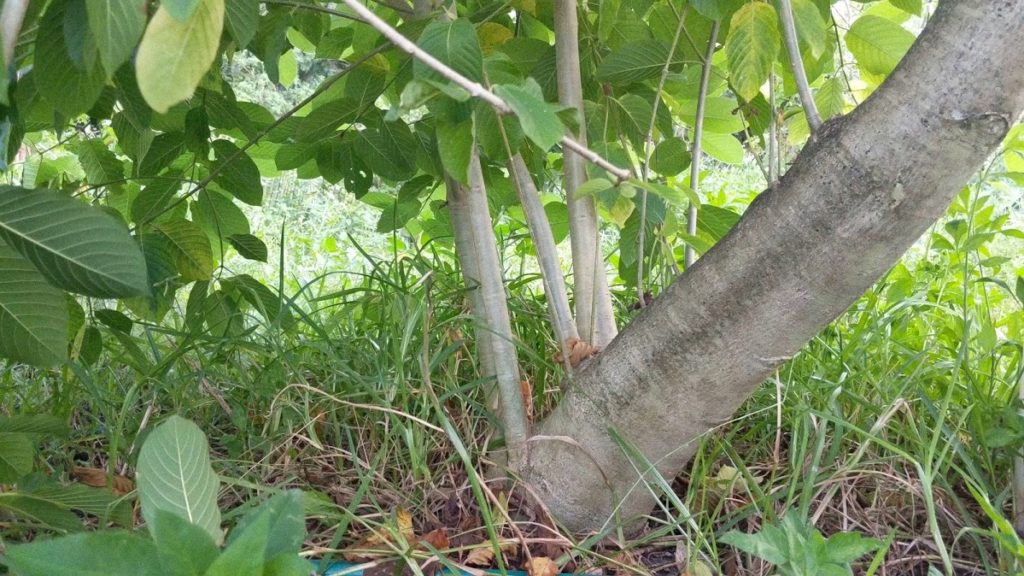
You can definitely grow your own Kratom! Well, if you live in a country where it is legal to do so, at least. Kratom prefers a warm and moist environment, which might make it difficult to grow depending on where in the world you are.
Growing Kratom from seed can be difficult, because only very fresh seeds will work. Germination can be particularly challenging, because the seeds like drenched soil. But as we know from growing Cannabis, this is the perfect environment for fungi and rot to take place.
At the very least, it takes someone very committed to grow Kratom. So, don’t get started until you’re ready to adventure into the painstaking process that is growing Kratom!

Given all that we’ve spoken about in this article, it seems like Cannabis and Kratom have a lot of similarities. Just by looking at how controversial they are as substances makes them eerily alike. Although they are two completely different plants, they can be used in many of the same circumstances.
When it comes to the matter of opioid addiction, the two are being viewed in the same kind of light. For example, they are great at helping to ease the symptoms that come with Opiate Withdrawal, such as insomnia, stress and nausea. But it’s very important to realize that these two plants do this in very different ways.
The Cannabis plant excites the Endocannabinoid System, and there are receptors in the brain that receive Cannabinoids happily. When it comes to Kratom, on the other hand, opioid receptors are the ones that are excited. So while we might be experiencing similar effects from both plants, the biological impact happens in a completely different place.
While Kratom is ultimately an opioid replacement, Cannabis is not. It works in very different ways and excites different receptors. The final result might be very similar, but two very different roads to get there.
Arguably, Kratom is a better medicine for opioid addiction than Cannabis purely because it operates in the same place as opioids. Cannabis may induce relaxation and sleep, but through the endocannabinoid system instead.
Another thing that makes these two plants so alike is their controversy. Completely unrefined plant material that gives the user a somewhat psychoactive effect when ingested: now that is something quite rare in the plant kingdom.
When we talk about illicit drugs, we are usually talking about substances that require a lot of refinement for them to reach their level of potency. Take heroin for example, which is much more concentrated than opium. Or we can look at coca, which is refined many times to become the very concentrated version we know as cocaine. But when it comes to Cannabis, it just grows out of the ground that potent. There is no need for refinement. And this is what makes Kratom and Cannabis “plants of controversy”.
Should a plant be illegal? It’s pretty ridiculous. It must serve some purpose if it is here on Earth, and so long as nobody is adulterating it or refining it, it is technically more pure than the sugar we consume.
So, when we really examine Kratom and Cannabis comparatively, this resemblance is uncanny! Who would have thought that a simple leaf or flower could cause governments to slam down their hammers and ban a Tree?
Overall, it seems like Kratom is much like Cannabis in the sense that there is no real need for anybody to be alarmed, as long as everything is done in moderation and responsibly. They are both herbs that offer the user some relief from whatever ailment they are experiencing with little to no side effects. Their psychoactive components make them controversial in the eyes of the government, but these plants have a lot to offer people in the way of medical benefits.
Final thoughts
In a world where opioid addiction is at its greatest, there seems no reason to refuse people the option to try something like Kratom. Pharmaceutical opioids are powerful and addictive, and if it boils down to risk management, Kratom just makes more sense. So far as we know, there are little side effects from using Kratom, and weaning off it is much easier than weaning off methadone, for example.
There are many people who report the many benefits of using Kratom both physiologically, mentally and with respect to addictions. There seems to be no extreme or immediate danger when using Kratom (or Cannabis for that matter), so government impositions seem a little bit extreme.
The power of Kratom is hard to deny, and its potential as a natural alternative to opioids is a characteristic that many people can grow from!
Kevin

